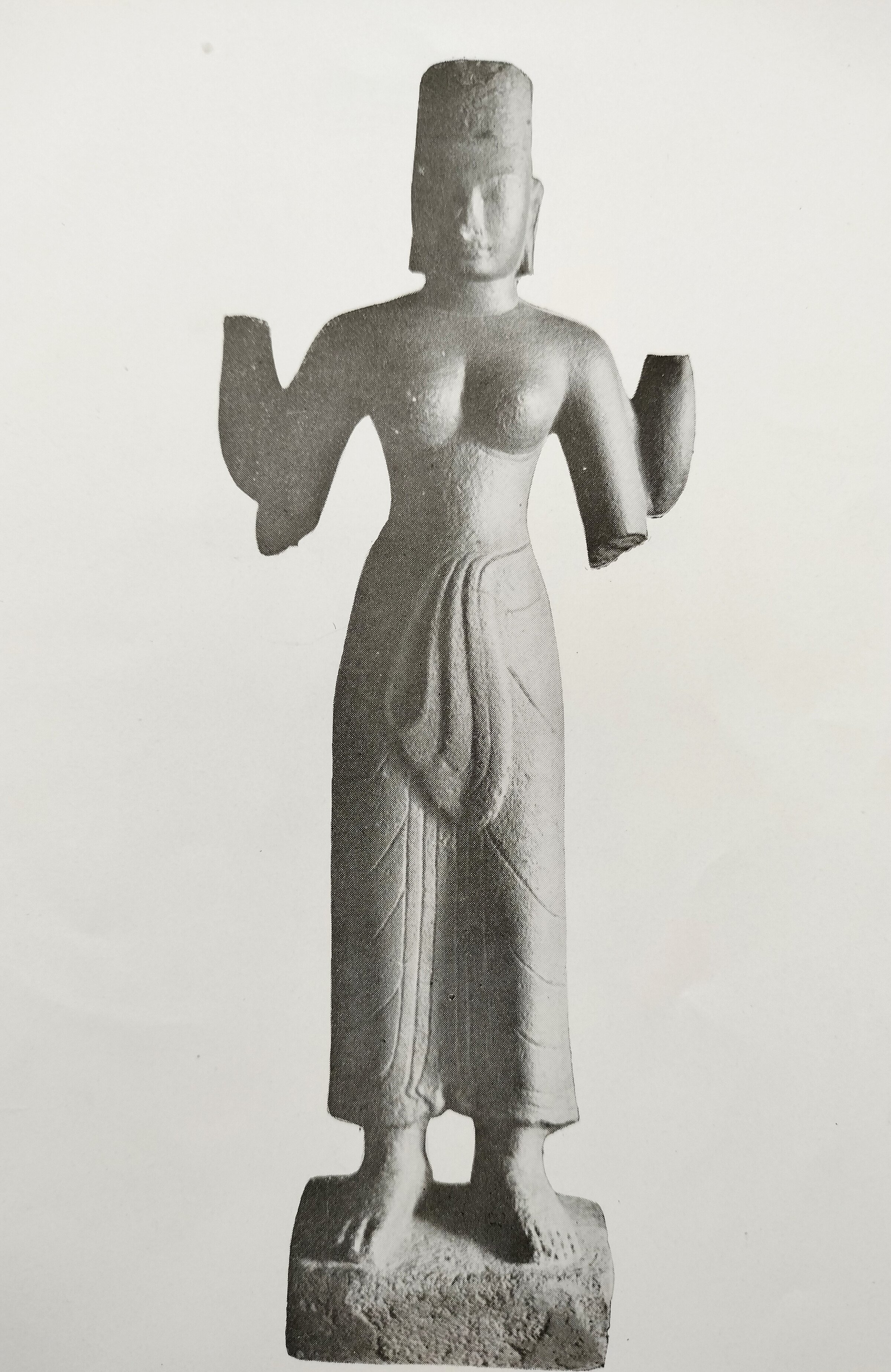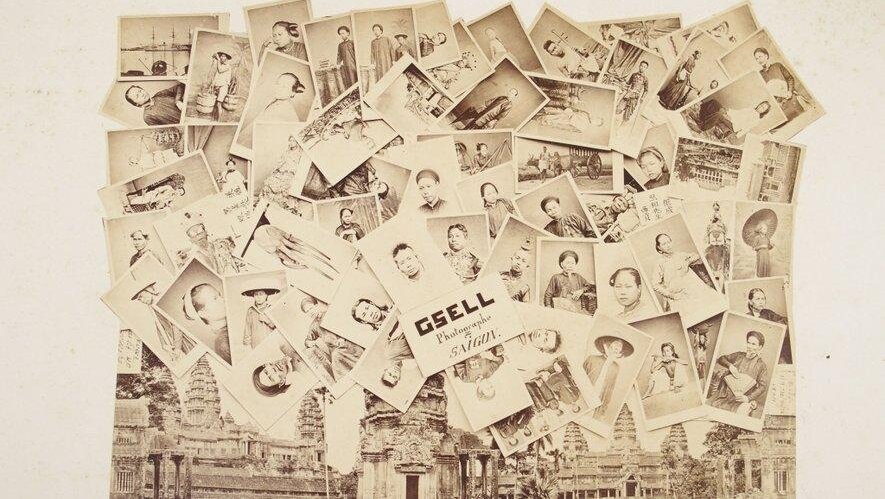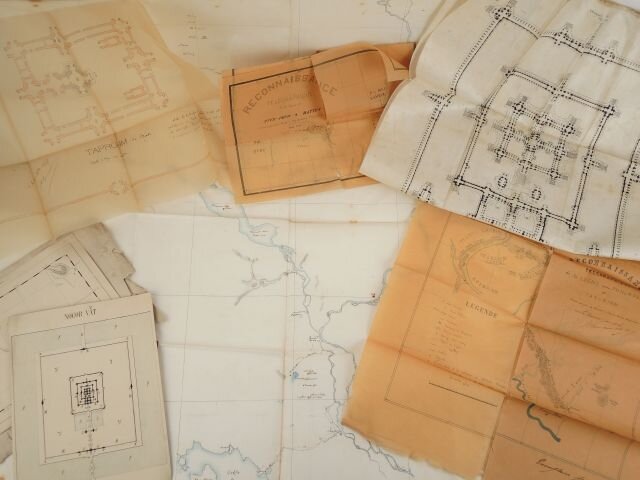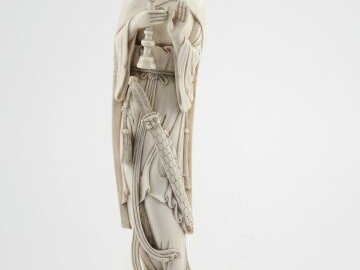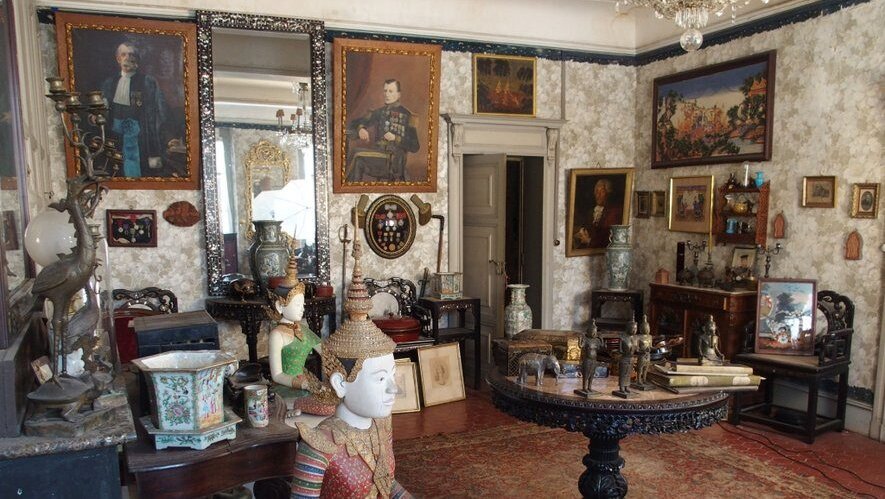About Jean Moura's house and Khmer collection
by Angkor Database
Mystery surrounds the auction sale of the first 'Director of the Protectorate of Cambodia''s archive and collection in 2017.
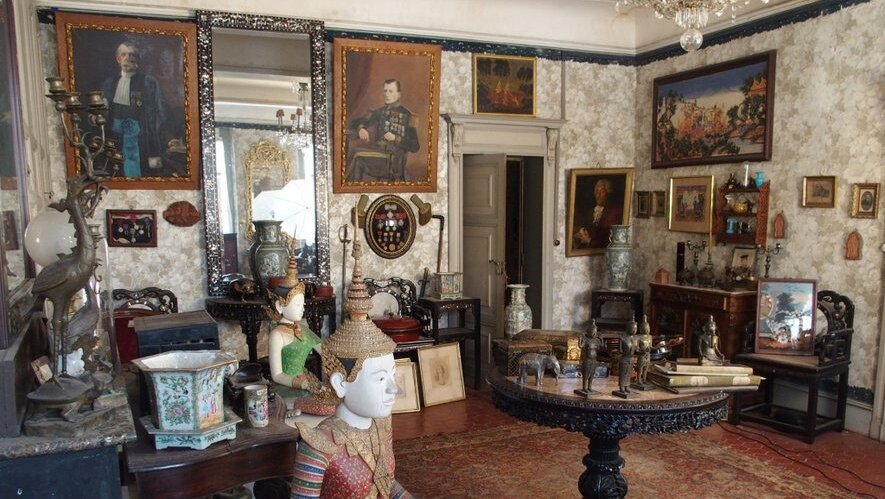
- Publication
- ADB Reference Document ART55
- Published
- 2022
- Author
- Angkor Database
- Pages
- 1
In 1913, Louis Finot, then Director of EFEO, and Etienne Lunet de Lajonquiere, who had published his remarkable study on Les Monuments du Cambodge, paid a visit to the residence of the former administrator of Cambodia Jean Moura in Moissac (Tarn-et-Garonne, Southwestern France)[1]. “It was the first opportunity to get a rather precise idea of the interesting collection gathered by the former representative of France in Cambodia before 1879”, commented Alfred Foucher in his short study of the photographic material brought back by Finot and Lajonquiere to the Commission archéologique de l’Indochine in Paris.
Even if only a few artifacts were considered in that study, it is the background description provided by Foucher that brings to us some telling details about how French officials dealt with the Cambodian artistic heritage in those times. After noting that “les deux délégués de la Commission archéologique de l’Indochine ont été fort courtoisement reçus par Mme Veuve Moura, qui a bien voulu faciliter de son mieux leurs études et les travaux du photographe”[“the two emissaries of the Commission received the most courteous welcome from the Widow Moura, who did her best to facilitate their inquiry and the photographer’s work”], we read:
- “Malheureusement les pierres sculplées, sur lesquelles s’est naturellement concentrée leur attention, se trouvent avoir été utilisées pour la décoration de la maison et scellées au mur du corridor ou de la salle à manger: il a donc été impossible de les déplacer et de chercher la lumiere favorable ou le recul nécessaire, si bien que plusieurs n’ont pu être photographiées ou né l’ont été que très imparfaitement.” [“Unfortunately the sculpted stones, on which their attention naturally focused, happen to have been used as decoration of the house and sealed to the walls of the hallway or the dining room: it was therefore impossible to move them in order to seek a more favorable light or the proper distance, so that several could not be photographed, or were only very imperfectly captured.”]
- “D’autre part, Mme Veuve Moura n’a pas connaissance que feu son mari ait jamais pris la précaution de coucher par écrit 1a provenance de ces divers fragments ou du moins de ceux pour lesquels cette provenance lui était connue. Par suite, ce genre d’indications fait entierement défaut au catalogue complet et sommaire que nous sommes en mesure de publier aujourd’hui de la collection”. [“On the other hand, Mr. Moura’s widow is not aware that her late husband ever took the precaution of setting down in writing the provenance of these various fragments or at least of those for which this provenance was known to him. Consequently, this kind of indications is entirely lacking in the complete and summary catalog of the collection that we are ready to publish today”.]
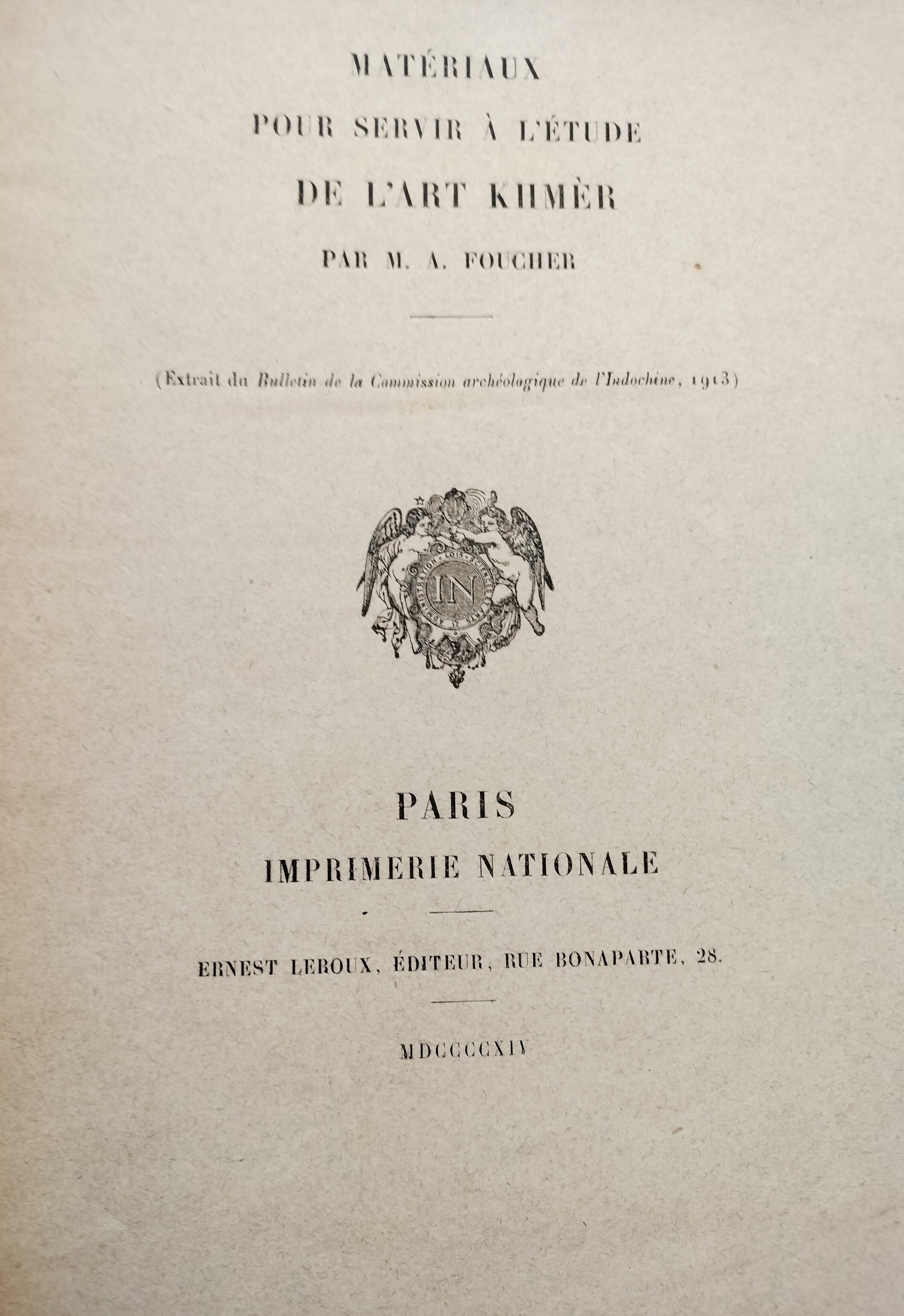
Was this catalog ever established and published? We are looking for it. But more than a century later, the story took a new turn with the sale of that same house by the heirs of Pierre Delbrel, a local attorney and politician who haod inherited Moura’s townhouse. With the heirs remaining mute about the fate of the artworks ‘attached’ to the walls, we only happened to hear that most of Moura’s personal collection and archive have been dispersed during an auction sale in 2017.
For this statue seen at Moura’s house, Foucher just provided the caption ‘Female deity with four arms”.
The collection, containing in particular 224 photographs of Angkor an1d Cambodia by famous photographer Emile Gsell (lot n 4), collated by Jean Moura in an album, was auctioned in Toulouse on 23 Sept. 2017. We have asked the auction company, Primardeco, for more details awithin the confidentiality limitations surrounding those sales. Titled “Art de la Chine: Collection Jean Moura”, the sale included 173 lots, from Chinese and Vietnamese china and ceramics to the Gsell photographs (with 166 views of Angkor), “Indochinese” lacquerhaed and ivory-incrusted panels, pieces of furniture, Khmer bronze statues (aupparently modern replicas), Japanese and Burmese tools, and a collection of sketches, notebooks and maps related to the Angkorean temples, authored by Jean Moura.
Visual of Lot 4 provided by the auction house
According to our sources, EFEO did not take part in the bidding. The problem here is that it will make the researchers’ task much more difficult. For instance, it would be important for historians to peruse these photographs by Emile Gsell, see if they were just prints of already-known plates, or altogether unknown so far. As for the Khmer heads and lintels sighted at the house in 1913, retrace their origin would be of the utmost importance for archaeologists and art historians, in Cambodia and elsewhere.
Part of Jean Moura’s archive, with Tonle Sap and Angkor maps (auction house photo)
Amongst the auctioned collection, ‘Jeune femme au sabre’ (Young woman with sword), ivory, China.
of Moissac being second in seniority within the Cluniac hierarchy only to the abbot of Cluny himself. In the 15th century, under the rule of abbots Pierre and Antoine de Caraman, the Gothic part of the abbey church was completed.
View of part of the Moura collection before it was auctioned in 2017 (photo La Depeche).Two Khmer modern statues stand in the foreground.
Tags: Protectorate, Khmer art, Asian art, Indochina, French photographers, French colonialism, French administrators, conservation, museology
About the Author

Angkor Database
Angkor Database — មូលដ្ឋានទិន្នន័យអង្គរ — 吴哥数据库
All you want to know about Angkor and the Ancient Khmer civilization, how it keeps attracting worldwide attention and permeates modern Cambodia.
Indexed and reviewed books, online documentation, photo and film collections, enriched authors’ biographies, searchable publications.
ជាអ្វីគ្រប់យ៉ាងដែលអ្នកទាំងអស់គ្នាចង់ដឹងអំពីអង្គរ, អរិយធម៌ខ្មែរពីបុរាណ, និងមូលហេតុអ្វីដែលធ្វើឲ្យមានការទាក់ទាញចាប់អារម្មណ៍ពីទូទាំងពិភពលោកបូករួមទាំងប្រទេសកម្ពុជានាសម័យឥឡូវនេះផងដែរ។
Our resources include the on-site Library at Templation Angkor Resort, Siem Reap, Cambodia, with exclusive access for the resort’s guests. Non-staying visitors can ask for a daily pass email hidden; JavaScript is required.

